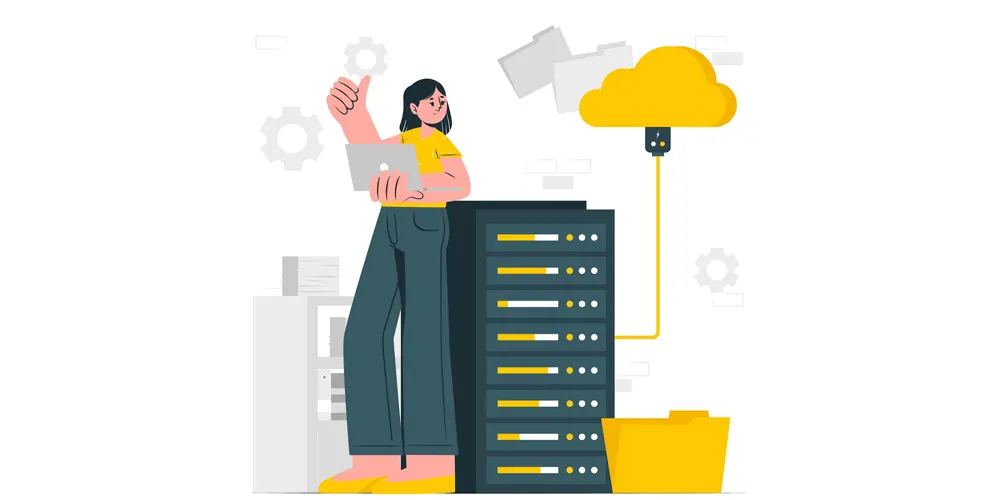7 Important Factors to Consider When Implementing LCR
In our previous blog, we introduced you to what Least Cost routing is, how it works and the many benefits it has to offer to VoIP carriers and UCaaS providers alike.
While implementing LCR might seem easy (It indeed is but…) you have a lot of things to consider to maximize your profit potential. Why exactly? Well, let’s just say that no traffic is alike. So while vanilla LCR will work fine, it won't be as effective.
When you consider some important factors and fine tune your LCR setup, you’ll experience a multiplier effect on the benefits you receive.
So we shall brush over the basics and go through all the important factors you need to consider when implementing LCR in this blog.
I will follow up this blog with a guide on how to set up LCR in a step by step manner. For now, let’s stick to our current topic.
We shall be starting off with a bit of basics!
Understanding Least Cost Routing (LCR)

The general tendency of a lot of people is to just switch on a feature and expect miracles. Sadly, that rarely is the case. So why is it not the case? A lack of understanding about the feature and underlying technology.
This is why it is important to understand features and technologies to maximize the benefits you can reap by utilizing them. Don't worry, I’ll keep this section short. In case you want to dive into the details, please go through our Introduction to LCR blog.
Defining Least Cost Routing (LCR)
Least Cost Routing, in simple terms, is a method used to find the most cost-effective way to connect telephone calls. It involves analyzing different available routes and selecting the one with the lowest cost.
This helps VoIP Carriers and UCaaS providers save money by choosing the most affordable path for each call. LCR considers factors like call volume, carrier contracts, and geographical considerations.
Ultimately, Least Cost Routing ensures that businesses optimize their communication costs by selecting the most economical route for their calls.
Significance of LCR for the Telecommunication Industry

The significance of Least Cost Routing for the telecommunication industry lies in its ability to optimize communication costs.
Operational expenses make up the majority of the cost incurred by a carrier for a UCaaS provider. Operational expenses encompass various aspects such as infrastructure maintenance, personnel, and network management.
However, routing costs, which involve the charges incurred for routing calls through different carriers, often make up a significant portion of this.
By intelligently selecting the most cost-effective routes for telephone calls, businesses can achieve substantial savings. This method allows companies to minimize expenses while maintaining call quality.
Thus, by minimizing the biggest cost component for a carrier, LCR improves profitability and resource allocation significantly.
Carriers and UCaaS providers are thus empowered to deliver affordable and reliable global communication services. Moreover, as this makes the market more competitive, it serves in the benefit of all parties involved.
With the basics out of the way, we can dive straight into the factors that influence LCR decision-making.
Factors Influencing Least Cost Routing Decisions
As a Carrier or UCaaS provider, you need to be careful when setting up Least Call Routing. Many things need to be considered so here’s a list of all the important factors.
1. Quality of Service (QoS)

Customer experience is of utmost importance in present times. In telecom, the customer experience is directly determined by the call/audio quality. Thus, a provider needs to ensure that they deliver the best possible call quality to their customers.
Now, multiple factors influence call and audio quality which need to be considered. Here are the important ones among these.
Reliability: Evaluate the reliability of routing paths to prevent dropped calls and ensure consistent connectivity.
Latency: Select routes with low latency to minimize delays during calls and maintain real-time communication.
Jitter: Minimize jitter by choosing routes that offer stable and consistent packet arrival times, avoiding audio distortions.
Packet Loss: Opt for routes with minimal packet loss to prevent gaps or missing audio in conversations.
Bandwidth: Ensure sufficient bandwidth on selected routes to handle the call volume without congestion or delays.
Network Redundancy: Implement redundant routing paths to mitigate network failures and maintain uninterrupted communication.
Monitoring and Analytics: Continuously monitor call quality metrics and leverage analytics tools to gain insights and optimize routing decisions.
Considering these QoS factors in LCR implementation allows for reliable, low-latency, and high-quality communication, enhancing the overall user experience. For profit maximization, it is advisable to find the right balance between cost and call quality.
2. Carrier Contracts and Pricing

This is the most important bit when it comes to implementing LCR. Carriers, the routes they offer, the costs involved and the details of the contracts are important points to consider. This is because direct and indirect costs, both need to be minimized.
Contract Negotiation: Negotiate favorable contracts with carriers to secure competitive rates based on call volume and traffic patterns. Well-negotiated contracts can lead to significant cost savings in routing expenses to begin with.
Pricing Structures: Understand the pricing structures offered by different carriers, including connection fees, per-minute rates, and any additional charges. Analyze these pricing details to identify the most cost-effective options.
Rate Comparison: Compare rates offered by various carriers for different call types, such as local, long-distance, or international calls. Choose carriers that provide the best balance between cost and quality for each call category.
Hidden Charges: Scrutinize carrier contracts for any hidden or additional charges that may impact the overall cost. Be aware of fees related to porting, termination, or additional services that carriers may impose.
Contract Terms and Flexibility: Assess the contract terms, including the duration, termination clauses, and scalability options. Ensure the contract offers the desired flexibility to accommodate changing business needs.
If you’re able to navigate carefully through the above mentioned factors, you will have a strong foundation to setup LCR on top of.
3. Call Volume and Patterns

Call volume and patterns keep changing throughout the day. There are multiple factors that affect call volumes and patterns but we won’t discuss those here. The veterans in telecommunication have a good understanding about this.
In case you’re not so experienced, you need to consider the following factors when implementing LCR. Veterans, please make sure to be through with this.
Call Volume Analysis: Evaluate the volume of incoming and outgoing calls to identify peak and off-peak periods. Understanding call patterns helps determine the most cost-effective routing options.
Peak Hour Routing: During peak hours, select routes that offer competitive pricing without compromising call quality. Efficient routing choices can help manage call traffic effectively.
Off-Peak Hour Routing: During low call volume periods, explore routes that provide cost savings without significantly sacrificing call quality. Optimizing routing decisions can maximize cost efficiency during off-peak hours.
International Calls: Assess the frequency and nature of international calls. Determine carriers that offer competitive rates for international routing. Also take into account factors such as connection quality and reliability.
Call Patterns and Frequencies: Analyze specific call patterns, such as frequently dialed numbers or specific destinations. Tailor routing decisions to optimize costs and ensure reliable connections for these patterns.
This analysis enables efficient resource allocation and maximizes the benefits of Least Cost Routing. Moreover, this fine tuning will ensure that your LCR setup is best suited to the nature and type of traffic you carry.
4. Geographic Considerations

If you have wide spread operations that span continents, you need to consider additional factors when implementing LCR. Different regions have different communication requirements and other dynamics that need to be accounted for.
Here are the key considerations.
Local Routing: Determine if there are cost advantages in routing local calls through specific carriers or providers. Assessing local routing options can lead to significant savings in communication costs.
International Routing: Evaluate the pricing and quality of routes for international calls. Different carriers may offer varying rates and call quality for specific international destinations. Consider these factors to optimize costs and QoS.
Call Destination Analysis: Analyze the call patterns and frequently dialed destinations. Identify carriers with competitive rates and reliable connections for specific geographic regions or countries.
Routing Efficiency: Evaluate the efficiency of routing paths based on geographic proximity. Choosing carriers that provide direct or shorter routes for certain destinations can minimize costs and reduce latency.
Regulatory Compliance: Ensure compliance with international and local regulations related to telecommunication services. Familiarize yourself with any legal requirements or restrictions that may impact routing decisions.
Yes, LCR works well as a blanket solution. However, when you’re able to fine tune it for all the different regions you operate in, you can maximize your profits further.
5. Routing Redundancy and Failover

One important rule about the world of telecommunication is that the flow of calls should never be interrupted. Call traffic disruptions have an adverse impact on your business. You’re also making a loss for the entire duration of the call flow interruption.
Thus, it becomes important to ensure that you have enough redundancy in place. Here are some key factors to consider when setting up LCR.
Redundant Routing Paths: Implement multiple routing paths to ensure redundancy and minimize the risk of service disruptions. Having alternative routes in place allows for seamless communication in case of network failures or outages.
Failover Mechanisms: Establish failover mechanisms to automatically switch to backup routes when primary routes become unavailable. This ensures uninterrupted communication and minimizes downtime.
ConnexCS’s LCR feature does this automatically. Thus, you will have more time to dedicate towards growing your business.
Network Monitoring: Continuously monitor the network and routing paths to identify potential issues or failures. Proactive monitoring enables quick detection and prompt action to maintain a reliable communication infrastructure.
Geographic Diversity: Opt for routing paths with geographic diversity to reduce the impact of localized disruptions.
By choosing carriers with diverse network infrastructures, the chances of simultaneous failures across multiple routes can be minimized.
Performance Evaluation: Regularly evaluate the performance of routing paths, including latency, packet loss, and call quality. Assessing the performance helps identify areas for improvement and allows for adjustments to optimize redundancy and failover.
Thus, routing redundancy and failover are a critical consideration that needs to be accounted for. The benefit with LCR is that you can have numerous backup routes in place. This allows you to have enhanced redundancy in case of wide scale outages.
6. Technological Considerations

Having multiple routes and carriers to carry your traffic means having to connect and smoothly operate with all parties. Now, you won’t find all parties using the same infrastructure, architecture, protocols of tech stacks as you do.
Thus, it becomes necessary to ensure compatibility among all carriers and routes while setting up LCR. Here are the key factors you should focus on.
VoIP and SIP Trunking: Understand the technical aspects of Voice over Internet Protocol (VoIP) and Session Initiation Protocol (SIP) trunking. These technologies facilitate efficient call routing and can provide cost savings and flexibility.
Network Infrastructure: Evaluate the existing network infrastructure to ensure it can support the demands of LCR. Factors to consider include bandwidth capacity, network latency, and reliability.
Upgrading or optimizing the network infrastructure may be necessary to ensure smooth LCR implementation.
Hardware and Software Compatibility: Assess the compatibility of existing hardware and software systems with LCR requirements. Ensure that the LCR solution can seamlessly integrate with the existing infrastructure to avoid compatibility issues.
Scalability: Consider the scalability of the LCR solution to accommodate potential growth in call volume or changing business needs. Scalable solutions allow for seamless expansion and can adapt to evolving requirements.
Security Measures: Implement robust security measures to protect against potential threats, such as unauthorized access or call fraud.
Encryption, firewall protection, and secure authentication mechanisms should be in place to safeguard the communication infrastructure.
Analytical Tools and Reporting: Utilize analytical tools and reporting capabilities to monitor call quality, route performance, and cost savings. These tools provide valuable insights for optimizing routing decisions and identifying areas for improvement.
When you have a good technical integration with all your carriers and routes, implementing LCR becomes an easy affair. Moreover, you reduce the chances of any route failures due to incompatibility, enhancing network resilience.
7. Carrier Reputation and Service Level Agreements (SLAs)

The telecommunication industry has plenty of bad actors looking for the right moment to ambush you with frauds and malpractices. So when it comes to choosing carriers to run your traffic, it becomes necessary to opt for the ones with a good reputation.
Another consideration is the SLA being offered. It's always a good practice to have the expectations and deliverables cleared before any agreements are finalized.
Here are the more granular but important factors to consider.
Carrier Reputation: Evaluate the reputation and track record of carriers before selecting them for LCR implementation.
Consider factors such as reliability, customer satisfaction, and industry reputation. Working with reputable carriers helps ensure consistent service quality and reliable call routing.
SLA Assessment: Review the SLAs offered by carriers to understand the performance guarantees, uptime commitments, and support provisions.
Carefully analyze the terms and conditions outlined in the SLAs to ensure they align with your business requirements and expectations.
Network Coverage: Assess the network coverage of carriers to ensure they can effectively route calls to the desired destinations.
Consider their reach, both domestically and internationally, and evaluate their coverage capabilities for specific regions or countries.
Support and Maintenance: Evaluate the level of support and maintenance provided by carriers. Assess their responsiveness, troubleshooting capabilities, and escalation procedures.
Adequate support ensures prompt resolution of any issues that may arise during LCR implementation.
Interconnection Agreements: Ensure that carriers have established robust interconnection agreements with other networks.
These agreements facilitate seamless call routing and help avoid connectivity issues when calls traverse different carrier networks.
Thus, when you begin by opting for the most reliable partners, you can concentrate on cost optimization while not having to worry about QoS and frauds.
With that, we’re at the end of our list. Let’s wrap up everything we’ve earnt so far.
Concluding
Least Cost Routing is a powerful tool at the disposal of VoIP Carriers and UCaaS providers. It allows for a greater degree of cost optimisation without having to compromise on call quality and end user experience.
A multitude of things need to be considered while setting up LCR. This fine tuning will enable you to maximize profits, user experience and network resilience.
While LCR reduces your workload a lot, it is not a set it and forget it system. It is advisable to monitor and fine tune LCR on a regular basis to keep reaping profits.
Sounds promising, doesn’t it? Sign up and give it a try today!
























































































































